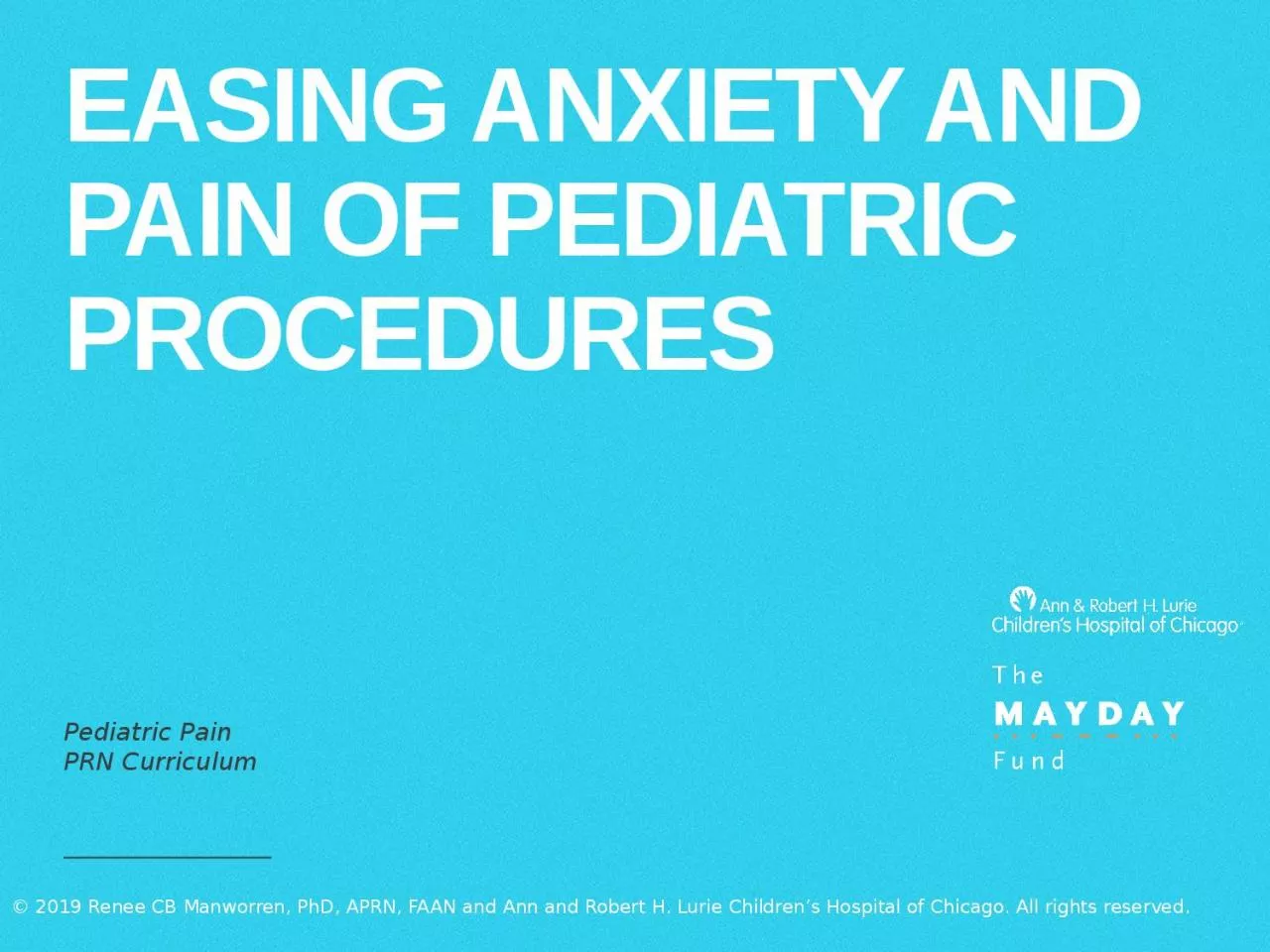

Procedures Pediatric Pain PRN Curriculum What procedures are performed in your clinical unit or in your specialty area on any given day Scope of pediatric procedural pain The American Society for Pain Management Nursing ASPMN ID: 932947
Download Presentation The PPT/PDF document "Easing Anxiety and Pain of Pediatric" is the property of its rightful owner. Permission is granted to download and print the materials on this web site for personal, non-commercial use only, and to display it on your personal computer provided you do not modify the materials and that you retain all copyright notices contained in the materials. By downloading content from our website, you accept the terms of this agreement.
Slide1
Easing Anxiety and Pain of PediatricProcedures
Pediatric Pain PRN Curriculum
Slide2What procedures are performed in your clinical unit or in your specialty area on any given day?
Slide3Scope of pediatric procedural pain
The American Society for Pain Management Nursing (ASPMN)
The Joint Commission (TJC)
American Academy of Pediatrics/Canadian Paediatric SocietyAmerican Academy of Pediatrics, American Academy of Pediatric Dentistry
Slide4Pediatric procedural pain prevalence
Painful procedures are plentiful in all healthcare settings
20:
Number of immunizations before 2nd birthday7.5 to 17.3: Mean number of painful procedures/ day in NICU.
9.7:
Mean number of painful procedures/ day in PICU
0 to 71:
number of painful procedures/ day in PICU
1 to 50:
number of painful procedures/ day/hospitalized child
Slide5Scope of pediatric procedural pain
The Problems with Untreated Pain
Immediate
Physiologic responses
Behavioral and emotional distress. Behavioral distress can make the procedure more difficult and last longer.
Long-term
Increased pain sensitivity
Increased need for analgesics for future surgeries.
Increased avoidance behavior
Social hypervigilance
Higher anxiety with subsequent painful procedures
Pain events can also lead to a more intense pain response to future procedures and an increased need for analgesics for future surgeries.
Slide6Why are painful procedures performed in your clinical unit or in your specialty area on any given day?
Slide7Who are key individuals for optimal pediatric procedural pain management?
What are their roles and responsibilities?
Slide8Every procedure, every time
American Society for Pain Management Nursing (ASPMN) Clinical Practice Guideline Recommendations
Create an individualized comfort management plan before a procedure begins
Promote a family-centered approach
Optimal comfort and management of pain and anxiety with the first procedure is critical for positive long-term healthcare utilization
Slide9One voice
O
One voice or one person coaching and giving the child information during the procedure
N
Need parent involvement
E
Educate patient before the procedure about what is going to happen
V
Validate the child with words
O
Offer the most comfortable, non-threatening position
I
Individualize the game planCChoose appropriate distraction to be usedEEliminate unnecessary people not actively involved in the procedureThe ONE VOICE can be a parent or healthcare provider ONE VOICE includes a number of strategies One voice or one person coaching and giving the child information during the procedure
Slide105 P’s of procedural pain management
Slide11Procedure-specific Recommendations
Slide12Using the 5 P’s,
formulate a developmentally appropriate procedural pain and anxiety management plan that can be used for the first and every one of these procedures
1 common procedure
1 developmental group
Slide13Before the procedure
Huddle: Establish a plan and prepare the team
Establish a plan
Prepare
During the procedure
Indications to stop and re-set
Raised or strained voices
Confusion, too many people trying to lead
Behavioral distress (screaming, flailing, need for restraint) disrupting procedure
Poor family coping
Urgency to “get it over with” instead of calming performing procedure
After the procedure
Reward the child for appropriate behaviors
Slide14Key Points
There are short and long-term effects of unmanaged procedural pain in children.
Managing procedural pain includes treating pain, anxiety (fear) and behavioral distress .
Parents want to be involved and have a role in procedural pain management.
Decreasing child distress can increase procedural success (fewer pokes).
Consider Nitrous oxide or procedural sedation
Having a pain treatment plan allows the team to work together better
.